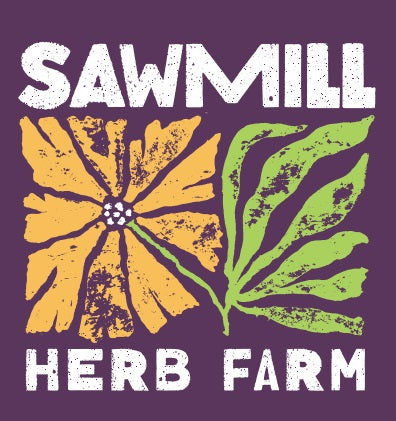Oils & Salves
Oil Infusions

Oil infusions are made by steeping herbs, either fresh or dried, in a carrier oil like olive oil or jojoba oil. This method is perfect for using herbs topically to soothe and heal the skin. Oils are absorbed through the skin and can help deliver herbal properties deeper into the body. Herbal oils are the base for many products like salves, lotions, and balms, and having a variety on hand allows you to make these products throughout the season. I particularly enjoy making infusions with freshly wilted herbs like St. John’s Wort, arnica, and mullein flowers, or dried herbs like calendula.
To make an oil infusion:
Wilt Fresh Herbs: Let the herbs wilt for at least a day to reduce moisture.
Prepare the Jar: Chop the herbs into small pieces and loosely fill a jar. Cover the herbs with oil, leaving about an inch of oil above the plant material.
For fresh herbs: Use 1 part fresh herb by weight to 3 parts oil by volume.
For dried herbs: Use 1 part dried herb by weight to 5 parts oil by volume.
Feel free to add extra oil if needed to fully cover the herbs.
Submerge Herbs: Use a fork to gently push the herbs down so they’re fully submerged under the oil. This prevents mold from forming. You can also use the fork to remove air bubbles by scraping the sides of the jar.
Infuse the Oil: Loosely cover the jar with a lid or a piece of tightly woven muslin and place it in a sunny window with a consistent temperature of around 80°F. Let the oil steep for about two weeks, shaking the jar occasionally. If water forms on the lid, wipe it off. If water accumu
Pro tip from herbalist JJ Pursell: If water has formed, you can heat the oil mixture gently in a saucepan for five minutes to evaporate the moisture before continuing to steep it in the sun.
Alternative Method (Oven Method): Place dried herbs in a glass baking pan, cover with oil, and heat in the oven at 170-200°F for 4-6 hours. Stir occasionally and ensure the temperature doesn’t get too high.
lates at the bottom of the jar, use a turkey baster to remove it or gently pour it off.
Strain and Store: After the herbs have steeped, strain the oil through muslin or cheesecloth into a glass jar and label it. Store your herbal oil in a cool, dry place. Keep in mind that oils like olive oil can go rancid within a year, while jojoba oil (a wax) has a much longer shelf life. We prefer jojoba oil for our infusions for this reason.
For more guidance, I recommend the book Master Recipes from the Herbal Apothecary by JJ Pursell.

Salves
Salves are made from herbal-infused oils and beeswax. The oil extracts the medicinal properties of the herbs, while the beeswax adds firmness and nourishment without clogging pores. To make a simple salve:
- Prepare the Infused Oil: Use 1 cup of your herbal-infused oil.
- Add Beeswax: Add 1/4 cup of beeswax to the oil.
- Melt the Mixture: Heat gently over a double boiler until the beeswax is completely melted.
- Test for Consistency: Drop a teaspoon of the mixture into the freezer for a minute. If it's too soft, add more beeswax; if too hard, add more oil.
- Pour and Store: Once the consistency is right, remove from heat and pour into small glass jars. Store the salve in a cool, dark place.
Salves can last for months or even years. They’re great for external healing of skin and tissues. You can experiment with combining different herbal oils for a multi-purpose salve, or add shea or cocoa butter for extra richness.
Here are some herbs to try in your oils and salves:
- Calendula (best dried)
- Sage
- Yarrow
- Comfrey
- St. John’s Wort
- Nettle
- Lavender
- Chamomile
- Mint
- Mullein
- Witch Hazel
- Plantain
